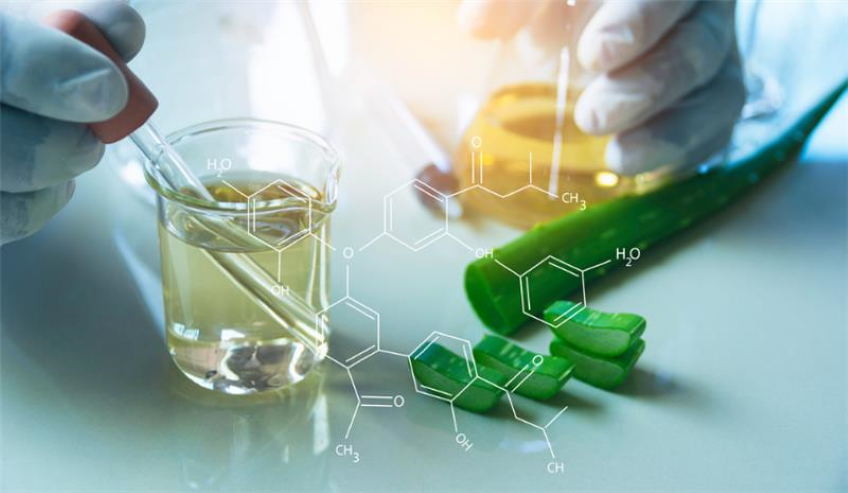
胶水话题博客

根据美国国家海洋和大气管理局(NOAA)的数据,2023年全球平均大气二氧化碳浓度达到了新的纪录高点。这一纪录为每百万分之419.3(ppm),与过去十二年的快速增长相当。专家估计,如果人类继续使用化石燃料满足能源需求,大气二氧化碳可能在本世纪末达到每百万分之800(ppm)的水平,这将导致未来几代人面临截然不同的环境。
减少二氧化碳和其他温室气体(GHG)排放可以减缓它们对环境的影响,并限制大气变化的后果,例如更频繁和更强烈的风暴。公司可以通过各种方法限制温室气体排放,也就是它们的碳足迹,包括创新技术。
制造商降低碳足迹的一种新兴解决方案是用含有再生或原生生物质(例如柳草、甘蔗、木材)的胶粘剂替代由化石基材料制成的胶粘剂。尽管含有可再生原材料的胶粘剂目前并不广泛使用,但它们的供应逐渐增加。在这里,我们将介绍胶粘剂制造商如何使用可再生原材料开发基于生物的胶粘剂,而不会影响产品质量或效率。
什么是生物材料?
生物材料来自能够随时间补充的自然资源,例如甘蔗和玉米淀粉。公司将生物材料加工成树脂或油,用于配制胶粘剂。经认证的“生物基”胶粘剂必须含有一定比例的生物材料。每种认证的百分比不同。表1概述了三种广泛使用的认证:EN 16785-1、ASTM D6866和EN 16640。
| EN 16785-1 | ASTM D6866 | EN 16640 | |
|---|---|---|---|
| 认证机构 | TÜV奥地利和TÜV德国 | 美国农业部和TÜV德国 | TÜV奥地利 |
| 定义 | 产品中的生物质量 | 产品中的有机生物碳含量 | 总碳含量中的生物碳含量 |
| 标签 | 生物基含量百分比 | 认证+生物基含量百分比 | 认证+星级系统,基于生物基含量百分比 |
增加胶粘剂中生物材料含量的重要性?
尽管胶粘剂通常是产品中一个小而常常看不见的部分,但它们发挥着重要作用。例如,胶粘剂将一次性尿布的不同层粘合在一起,将标签固定在饮料瓶上,并管理电动汽车电池中的热活动。基于生物的胶粘剂有助于朝着脱碳化的方向前进的公司减少其产品价值链产生的第三范围温室气体排放。
“拥有正确的胶粘剂是产品中最重要的部分,”H.B. Fuller的个人护理市场经理Nora Behrens说,“如果没有正确的胶粘剂,产品就无法组装。我们使用基于生物的胶粘剂的主要目标是帮助客户实现可持续发展目标并减少我们自身的环境影响。胶粘剂必须支持客户的旅程,而我们是旅程的一部分。”
生物基胶粘剂在卫生应用中的应用
在胶粘剂中加入生物材料存在挑战。化石基材料具有成本效益,并且通常具有由精确合成过程衍生的一致、均匀的化学结构。相比之下,可再生原材料的化学结构可能存在差异,因为它们来自受生物和环境因素影响的自然来源。生物材料需要受控加工以确保一致的质量。
研发团队在开发高性能生物基胶粘剂系列方面取得了巨大进展。制造商可以将H.B. Fuller的生物基热熔胶粘剂用于卫生产品的构造(材料如何固定在一起)和定位(保持产品位置)。H.B. Fuller与客户合作定制配方,以满足其产品的要求,与其生产设备配合,并确保产品符合监管指南。
克服创建生物基胶粘剂中的挑战
在开发生物基胶粘剂时,H.B. Fuller的专家首先与客户密切合作了解他们的需求。这包括最终产品中可再生原材料的百分比、应用方法以及他们希望使用的基材。例如,由天然基材(如棉花)制成的一次性尿布需要一种胶粘剂,即使材料与湿气接触膨胀,也能保持其粘合。
“不了解应用就无法发明胶粘剂,”H.B. Fuller欧洲、中东和非洲地区研发技术经理Karsten Voss说,“我们与客户密切合作,为不同应用开发胶粘剂。我们不只是把胶粘剂扔过围墙—我们在客户物品和客户基材上测试胶粘剂。胶粘剂和基材必须相互配合。”
一旦H.B. Fuller团队了解客户的需求,他们研究配方的生物材料候选者。他们审查每种材料的性质、行为和应用效果,以确定它是否可以在标准卫生产品线中使用。大多数配方需要类似的组分,如树脂、聚合物、增塑剂和添加剂。专家使用设计实验(DOE)方法优化胶粘剂配方,旨在确定与传统化石基材料性能相匹配或优于其性能的理想生物基替代品。
发展生物基胶粘剂的关键在于合作伙伴关系
从化石基胶粘剂转向生物基胶粘剂需要胶粘剂制造商、原材料供应商和客户之间的紧密合作。满足客户对生产和应用的要求只是问题的一部分。H.B. Fuller团队经常发现,教育客户什么构成生物基胶粘剂同样重要。这些对话启动了流程,并有助于确保其成功。
“人们对各种术语仍然存在一些困惑,”Behrens说,“我们教育客户并提供指导。‘关系’是我们的关键价值之一。你不仅需要供应商—你需要一个伙伴。”
包装应用中使用含可再生原材料的胶粘剂
除了用于卫生应用的生物基热熔胶粘剂外,H.B. Fuller还为更可持续的包装创建了一种几乎碳中和的胶粘剂。用于密封纸箱和包装的Advantra® Earthic™ 9370热熔胶粘剂包含高比例的生物循环和循环材料。H.B. Fuller在德国吕讷贝格的制造工厂获得了ISCC PLUS认证,以跟踪循环和生物循环材料在制造过程中的使用。通过ISCC PLUS质量平衡方法仔细记录循环和生物循环材料,确保客户可以在ISCC PLUS认证下宣称可持续效益。
质量平衡方法为公司提供了一条途径,以增加生产中循环和生物循环材料的数量,取代化石基原材料。然而,这也带来了挑战。目前,可再生原材料不仅比化石基材料更昂贵,而且在制造所需的数量上也不那么容易获得。克服成本将使生物基胶粘剂从替代品转变为标准产品。
技术架起生活标准和可持续未来的桥梁
用生物材料替代化石基材料制成的胶粘剂是可能的,可以减少公司的第三范围排放。生物基胶粘剂是科学创新使产品更可持续而不牺牲功能和性能的一个例子。Voss总结得很好:
“我们有责任通过不同的方法保持我们今天的生活标准—通过技术的发明。我们希望以更可持续的方式提供相同质量的产品。”
开发生物基胶粘剂是H.B. Fuller采取的许多步骤之一,以帮助客户减少其第三范围排放。在我们的2023年可持续发展报告中了解更多关于H.B. Fuller对可持续发展的承诺。
Blog Categories
Blog Categories
Archive
- 2025
- 2024
- 2023
- 2022
- 2021
